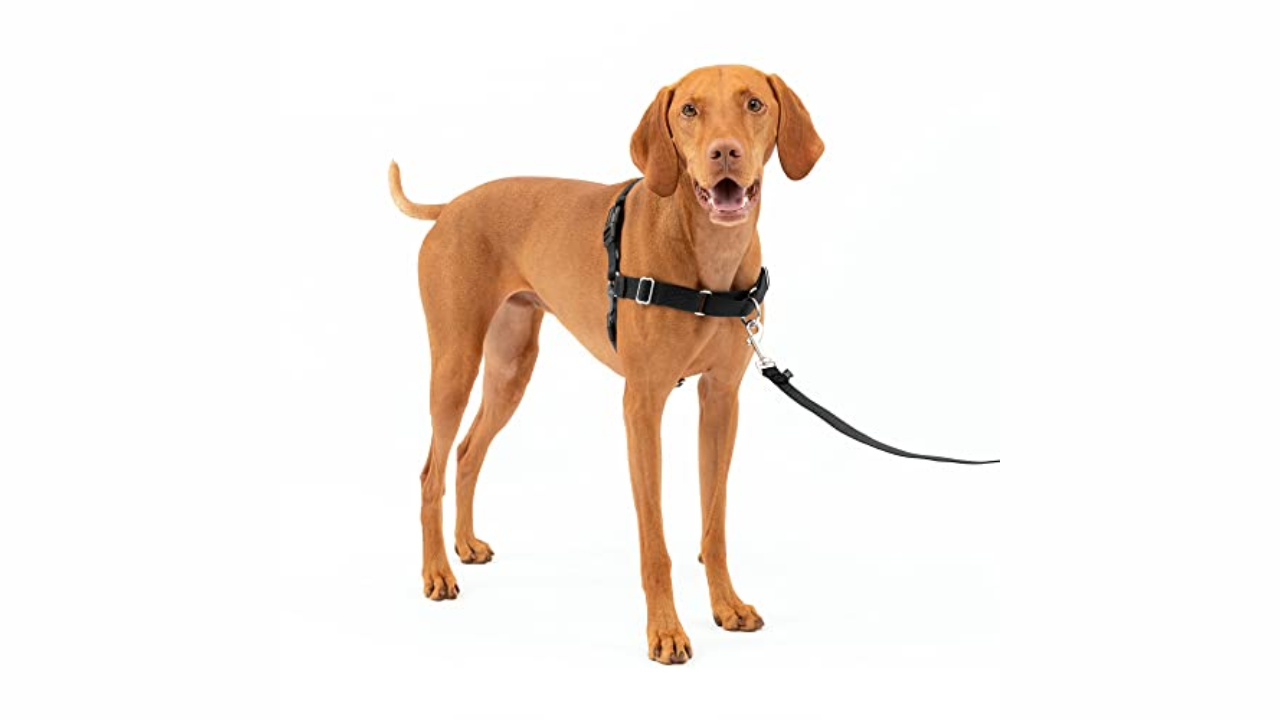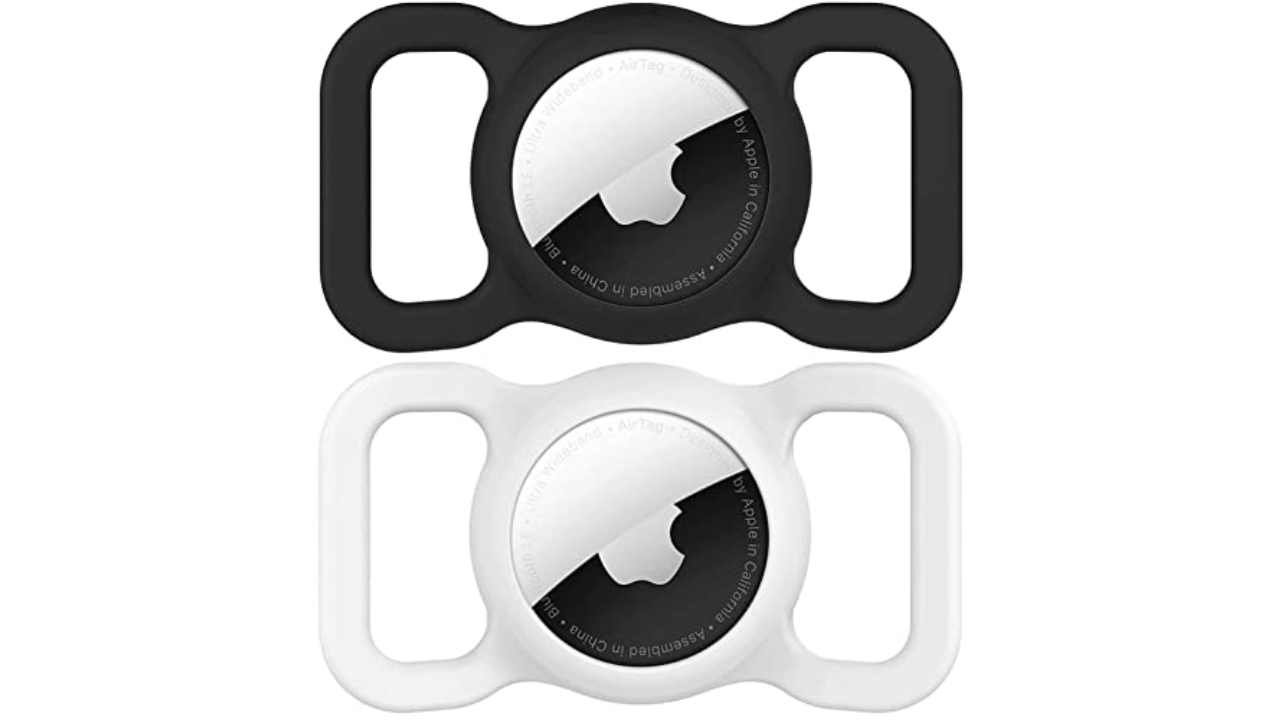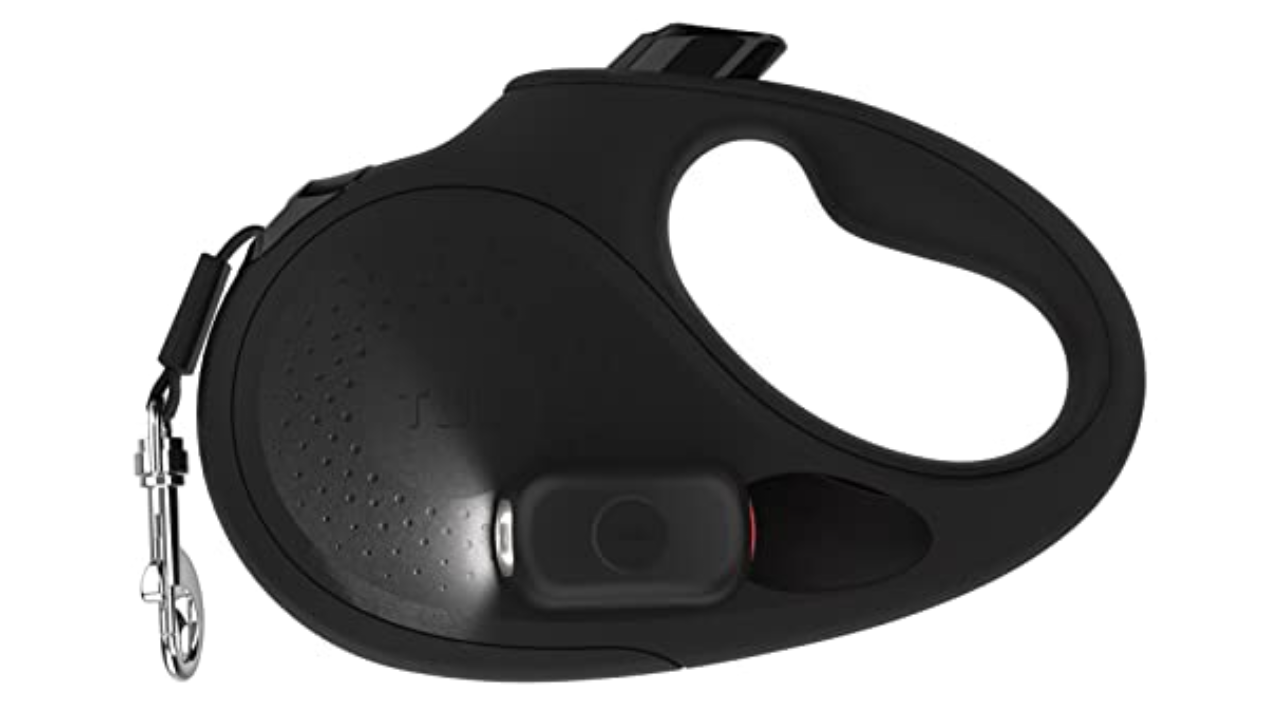We independently evaluate the products we review. When you buy via links on our site, we may receive compensation. Read more about how we vet products and deals.
Here's how often you should walk your dog, according to a veterinarian
All dog parents want to do right by their furry friends, and one of the most important ways to give your pup the best care possible is to make sure they are as active as they need to be. The top way to get your dog moving? Going on a walk. But how often should you actually be walking your dog? It’s a question all dog parents ask themselves — and it turns out the answer is as unique as your fur baby’s personality.
PetSafe Easy Walk Dog Harness
Airtag Dog Collar Holder (2 Pack)
Plutus Pet Double Handle Dog Leash, 6 Ft.
TUG Oval 360° Tangle-Free Retractable Dog Leash with Flashlight
Natural Dog Company Paw Soother + PawTection Balms
“How often you need to exercise or walk your dog will depend on their age, breed, size and if they have any existing health conditions,” said Dr. Whitney Miller, chief veterinarian at Petco. “Your pet’s veterinarian can help determine if walking is an appropriate exercise for your dog, and how much they need to walk each day.”
While how often to walk your dog is specific to your particular pup, there are some helpful guidelines to give you a general idea of a dog’s needs.
“The average adult dog needs about 20 to 45 minutes of moderate exercise twice a day, which can include a brisk walk,” Dr. Miller said. “However, active-breed dogs like border collies and Australian shepherds can need two to three hours of exercise and activity each day, and very small or aging dogs may get all the exercise they need just from walking around the house.”
Pro tip: If you want to monitor how much activity your dog gets in a day, fitness trackers for dogs actually exist. Smart collars with activity monitors, like the Link My Pet GPS Dog Tracker, can give you a breakdown of your dog’s daily exertion.
The benefits of walking your dog regularly
Various types of exercise benefit your dog, from playing a simple game of fetch to an impromptu case of the zoomies. But, walking has some unique benefits that make it a pet parent go-to.
“Going on a walk is good for your pet’s whole health,” Dr. Miller said. “They can experience positive benefits to physical health through exercise, mental health through training and social health through interactions with their environment and other people and pets.”
She added, “Additionally, allowing your dog to stop and sniff their environment can be good enrichment for them. Sniffing is one of the main ways your dog experiences their environment and there can be lots to take in on a walk, even in a familiar area.”
Plus, going on a walk is a good way to incorporate training into your daily schedule, helping you establish or maintain an important connection with your pup.
“Going on a walk with your dog creates an opportunity for additional bonding with your pet as you work on training and good manners together,” Dr. Miller explained. “Creating a good line of communication between you and your dog, ensuring they are checking in with you frequently and practicing positive reinforcement training can all help strengthen your connection.”
Not to mention it’s an excellent excuse to get you out of the house, too.
How to keep up with the robust walking recommendations
Of course, there are things that can get in the way of walking your dog as often as recommended. Maybe you have a busy schedule, or you can’t physically keep up with your dog’s vet-recommended routine. If that’s the case, don’t be discouraged. There are plenty of other options to keep your dog active.
“If you can’t find the time to go on a walk with your dog every day, other forms of exercise can be equally beneficial to your pet’s physical health,” Dr. Miller said. “Playing fetch at the dog park, in the backyard or even in the hallway for the recommended amount of exercise time can be enough to keep your dog active for the day. Swimming, agility training and other forms of exercise can also take the place of a walk for many pets.”
Dr. Miller recommends checking in with your vet to clear any new forms of exercise before including them in your dog’s regular routine. And if all else fails, a dog walker may be a good investment.
If you're looking for some top-rated pet accessories to make sure your pup is safe and secure on walks, check out these options below.
Many pet rescues and vets recommend walking your dog with a harness (like this Amazon No. 1 bestseller) rather than directly from a collar to keep pressure off your dog’s neck and throat. The American Kennel Club doesn’t report a preference but has a helpful guide on the pros and cons of collars and harnesses.
Give yourself added peace of mind and put an Apple AirTag on your dog's collar to help keep track of them if the worst happens. This small AirTag holder slides onto any collar or harness (it's a stretchy silicone) and it's soft enough that it won't bother your pet.
Make sure you and your pup are visible in any weather condition with this reflective leash. It’s six feet long, has a strong clip to prevent any escapes and two padded handles for holding tight. Plus, it comes in over 15 colors, so you can choose one that best fits your style.
Retractable leashes can give your dog some freedom when walking in a park or less traveled area. This highly rated option has a thick tape-like leash instead of a thin string, giving you and your pet more security. Two added bonuses: It comes with a clip-on flashlight for taking your dog out at night and a built-in potty bag holder.
Protect your dog's paws from sand, salt, snow, ice and heat with this set of non-greasy balms. The packaging is a lot like your favorite lip balm, making it easy to apply to your dogs pads. The Pawtection provides a wax barrier between your dogs paws and the ground, while the Paw Soother helps moisturize them.










